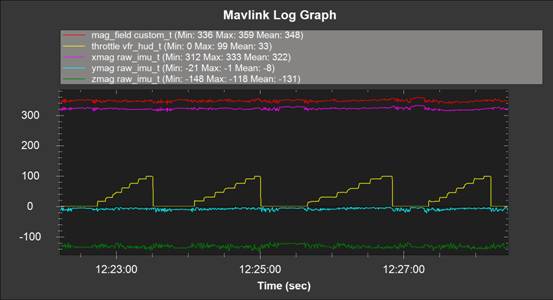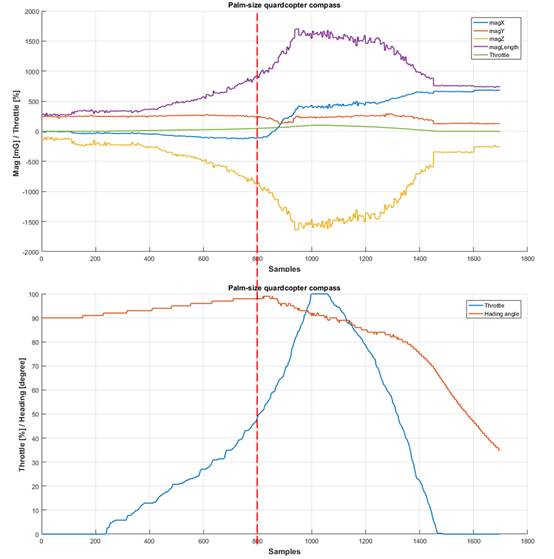As an important component of the UAV product, the electronic compass carries the function of guiding the absolute position of the drone. For ordinary designers, it is often difficult to correct the electronic compass, the calibration requirements are too frequent, the dynamic, high-speed operation suddenly deviates, and no matter how the electronic compass is corrected, it cannot operate normally. The main reason for the above failure is that the electronic compass is subject to magnetic field interference. For this problem, the world's leading magnetic sensor company, Aisheng Technology, has given a simple and efficient solution.
At present, the geomagnetic sensor IST8310 of the 3×3mm LGA package of Aisin Technology has a market share of over 80% in the drone market. The UAV products that can be seen on the market are all using Aisheng Technology. Geomagnetic sensors are the benchmark products for today's mainstream UAVs using geomagnetic sensors, so the drone test samples mentioned below are also of this model. It is well known that the magnetic field is inversely proportional to the distance of the distance, and the internal electronic compass of the drone is close to the rest of the electronic components. Therefore, the unreasonable arrangement of the internal system causes the electronic compass to be interfered by the magnetic field, which is often the case. Ignored by the designer. In order to avoid the crash situation caused by the electronic compass failure during the actual flight, after the drone completes the hardware proofing or trial operation, the actual flight is not required, and the accurate analysis of the electronic compass can be completed through the test. In the pre-test, the UAV was first fixed with wood, plastic, foam, and aluminum materials without magnetic fields. It is worth noting that the UAV is best equipped with a casing and a rotor, which can simulate the real flight time to the maximum extent. Case. Considering that the motor and circuit of the drone may be sources of magnetic interference, we need to export the data of 'X-axis magnetic field size, Y-axis magnetic field size, Z-axis magnetic field size, throttle size' from the I2C interface for storage and comparison. As an important basis for subsequent analysis.

Figure 1: The internal system design of the drone is reasonable. The magnetic field is inductive and stable when the throttle is opened.
During the test, it is only necessary to adjust the throttle from off to on and advance step by step, perform several rounds of repeated tests, and finally summarize the data of several rounds of tests to the same time axis for presentation. Since the drone has been fixed and there is no azimuth movement, theoretically, no matter how the throttle is adjusted, the numbers of the magnetic fields of the X, Y, and Z axes should not change much, showing a stable situation. But in fact, because the electronic compass assembly itself and the system will have noise, the data lines will have a certain degree of up and down jitter, but the trend should be constant. The smaller the jitter, the more stable the moving path. Similarly, when the throttle is opened or closed, a surge circuit is actually generated, and the magnetic field also fluctuates. The smaller the data line jitter, the better the position of the electronic compass is placed, and the overall design of the system is reasonable. As shown in Figure 1, an internal system with the correct design of the drone experienced four throttle changes during the test, from zero to 100%, but the pointing angle, X-axis, Y-axis, and Z-axis magnetic fields did not fluctuate strongly. The data will fluctuate slightly when the throttle is opened or closed. It shows that the electronic compass will not be affected by the magnetic field interference in the system during operation, and the drone will have better handling performance.

Figure 2: Problems with the internal system design of the drone The magnetic field fluctuates greatly when the throttle is opened.
Contrary to Figure 1, if there is a problem with the internal system design of the UAV, after the same test procedure, the data image will show significant deviation and fluctuation. As shown in Figure 2, the blue line in the lower picture in Figure 2 represents the throttle force. The orange line represents the pointing angle of the drone. Since the drone has been fixed, the angle of the pointing is not due to the increase of the throttle. Large reduction and change, but as can be seen from Figure 2, the UAV pointing angle in the test has deviated significantly, which indicates that the magnetic field induction of the electronic compass has changed. In the upper picture in Figure 2, it can be seen more clearly that the blue line (X axis), orange line (Y axis), yellow line (Z axis) have different degrees of fluctuation, and the Z axis has the largest fluctuation, X axis times. It. With this clue, you can further analyze where the source of the magnetic field changes is.
After the above detection process, if the designer can successfully find the magnetic interference source inside the drone, and repeat the above test again, the data image obtained by the test should be consistent with Figure 1, indicating the magnetic interference problem of the internal system of the UAV. It has been solved that the drone electronic compass can operate stably when the throttle changes. Through the solution given by Aisheng Technology, the drone can be screened in the early stage without actual flight, which not only reduces the test threshold, but also avoids the drone being out of control due to the failure of the electronic compass to operate normally. Machine risk provides a new idea for the industry.
(Source: Machine Network)